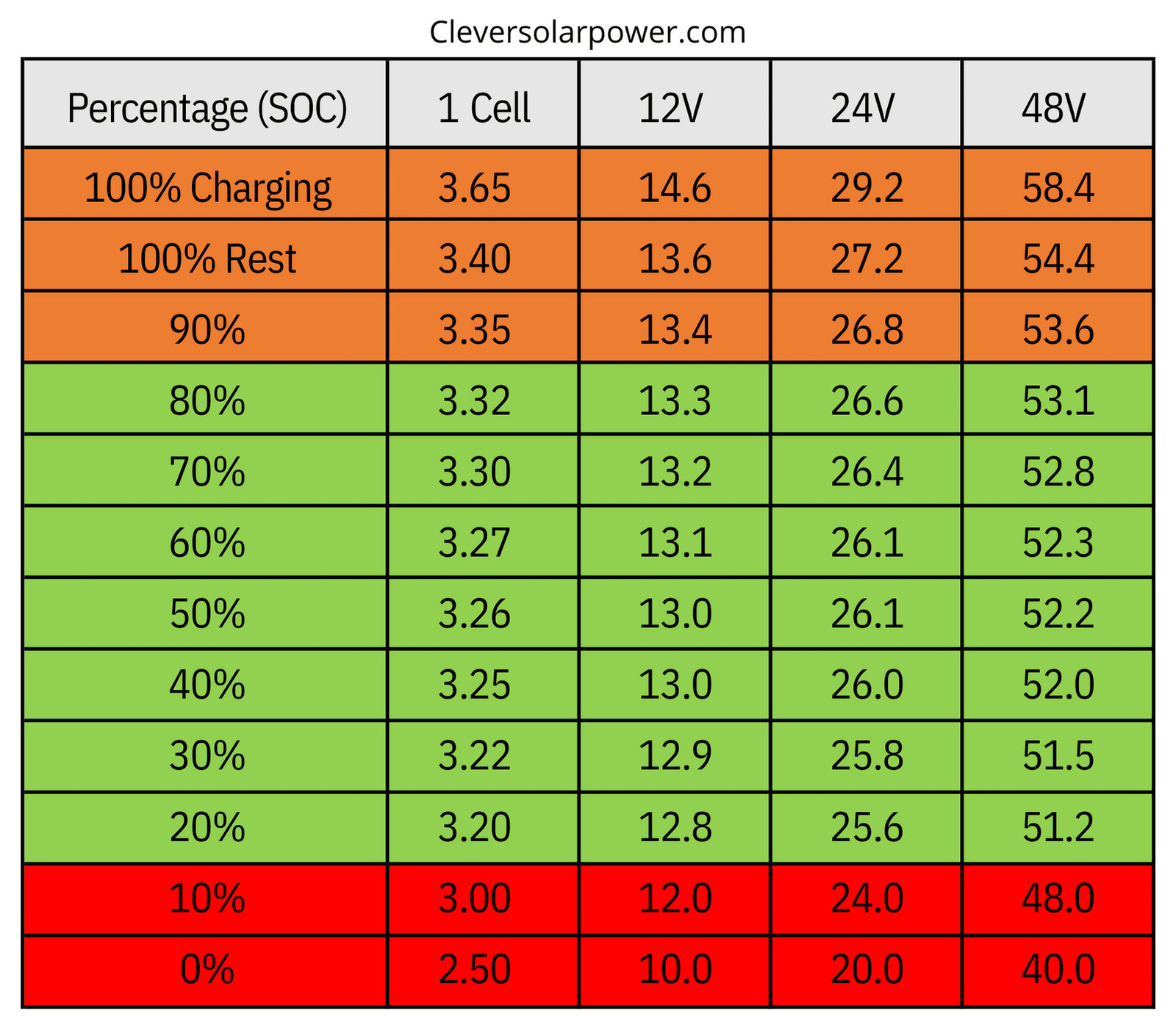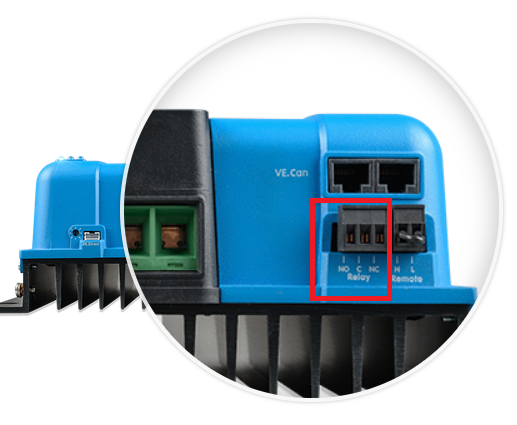Attaching a dump load to your solar system is a good way of using excess solar power when the battery is full.
Instead of ‘wasting’ the energy from the solar panels you can add a water heater.
This will divert the energy that cannot go into the battery anymore to hot water.
There are three main ways we can divert the load to a heating element. These are:
- Load or relay output on a Victron charge controller
- Using a voltage sensing relay
- Turn the heater on manually
Load or relay output on Victron Charge controller

Victron has charge controllers with a load output. It is possible to program these load outputs when a specific voltage is reached. These are the voltages you should set for LiFePO4 batteries:
- High voltage connect: 13.35V
- Low voltage disconnect: 13.15V
As you can see in the SOC chart for a lithium battery, these values are in between 85% and 65%.
The reason why 13.5V is used is that there will be a voltage drop. If you put the value 13.3V as a low voltage disconnect, your heating element might not work because the voltage drop will go below this value.

Using the load output only works if you use the 100V max PV input charge controller.
The 150V DC input doesnt have load outputs. Now you need to use the relay to turn on a temperature-controlled relay which then turns on a high current relay.

The temperature controlled-relay is there to turn off the heating element when a specific temperature is reached.
A video about this system can be seen here:
Voltage sensing relay
The second way is to use a voltage-sensing relay. However, I was not able to find this relay in the U.S.
It is available from a store in the UK and is cheap. However, I don’t know how much the shipping fees to the US are.
This works on the same principles as the previous method.
It turns on when a specific voltage is reached and turns off when a lower voltage is reached. All these voltages can be programmed. There are 12V, 24V, and 48V versions available. You can get another relay that can increase the current of the system from 10A to 40A.
Explanation of the setting:
You can check out the product here.
Manually
The last option is to turn it on manually through a switch.
This is by far the easiest method but also the most time-consuming.
You must monitor your shunt and switch the heater on when your battery reaches 90%.
Turning it off can happen automatically with your water temperature controller, or you can turn it off manually again with the switch. A good switch for this will be a battery switch that can handle a large current.
Recommended water heaters
I recommend using 150-300W resistors for 12V systems. This comes down to the following:
300W/12V=25A
If you use higher voltage systems, you can increase the power of the heating element.
Remember, the larger the heating element, the larger the voltage drop and the bigger your voltage range must be.
[custom-related-posts title=”Related Posts” none_text=”None found” order_by=”title” order=”ASC”]
I’m an off-grid enthusiast. I created this website to give clear and straight-to-the-point advice about solar power. I’m also the author of the book ‘Off-grid solar power simplified‘. Read more about me on my about page, check out my Youtube channel, or send me a message.
I’m working on a solar- wind project with my Boy Scout troop. Problem I’m having is a cheap dump load controller. Anyone have an idea without us having to buy a new controller. Thanks.
What controller do you have?